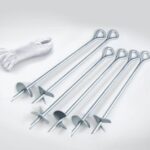Imagine it’s 36 degrees outside, the sun’s blazing, and you’re kicking back inside your home, not a drop of sweat in sight. Or maybe it’s the middle of winter, and you’ve got toasty toes without even touching the heater. Sounds like a dream, right? That’s the whole idea behind passive home design—comfort, without the constant fiddling or fuss. But what about reverse cycle ducted air conditioner? Does it still have a place in a passive home setup? You bet it does. Let’s clear the air and have a proper yarn about it.
What Is Passive Home Design, Really?
Passive home design isn’t some flash-in-the-pan trend—it’s a smarter way to build and live. At its core, it’s all about slashing energy use while keeping your home comfy all year round. And nope, you don’t need to live in a spaceship to make it work.
Think good insulation, the right orientation (north-facing windows are your best mate), airtight construction, and letting nature lend a hand with natural ventilation. But here’s the kicker—it’s not just about walls, roofs, and windows. It’s also about choosing the right systems that work with the home’s design, not against it. That’s where things start to get even more interesting.
The Myth: Passive Homes Don’t Need Air Conditioning
Now, there’s a whisper going ’round that truly passive homes don’t need air conditioning. In theory? Sure, that’s the goal. But real life’s not always so tidy.
You’ve got surprise heatwaves, those cold snaps that come outta nowhere, and let’s be honest—insulation can only do so much when Mother Nature decides to throw a tantrum. And if you’ve got a house full of people with different comfort zones (someone always wants it warmer, someone always wants it cooler), having a bit of climate control up your sleeve isn’t the end of the world.
In fact, having the right air conditioning system—one that’s efficient, smart, and plays nice with passive principles—can actually be the cherry on top.
Why Reverse Cycle Ducted Systems Are a Passive Design’s Best Kept Secret
Here’s where it all starts to click. Reverse cycle ducted air conditioners aren’t just there for backup—they’re like the quiet achiever of passive design. They heat and cool using one tidy system, so you don’t need a heater in every room or a noisy split system stuck to the wall.
Because most of these systems use inverter technology, they’re not guzzling power every time they kick in. Instead, they gently cruise along, keeping your home at just the right temp—no big swings, no big bills. Zoning makes it even better. Want the kitchen cooler than the bedroom? Easy. Only using the study today? No worries. It’s all about tailoring the climate to your lifestyle.
You know that feeling when you walk from one room to the next and it all just feels right? That’s what a well-zoned, ducted system delivers—comfort that follows you around the house, like a good mate.
The Comfort Equation: Efficiency Meets Climate Control
Reverse cycle ducted systems aren’t just clever—they’re comfort wizards. Here’s how they pull it off:
Zoned Comfort
You don’t need to freeze in the lounge just because your teenager wants Arctic vibes in their bedroom. Zoned systems let you set temps for different areas so everyone stays happy.
Inverter Technology
Instead of powering on and off like a clunky old fridge, inverters keep things steady, sipping energy rather than guzzling it. That means less wear and tear, and more consistent comfort.
Discreet Delivery
The vents are tucked away in the ceiling or floor, so they won’t mess with your design mojo. Clean lines, uncluttered walls—tick, tick.
All-Year Flexibility
Sweltering in summer? Freezing in winter? One system’s got your back through all the seasons, no second unit required.
Let the Design Work with the System, Not Against It
Getting the most out of your ducted system starts with thinking smart from the get-go. Where you pop those vents? That matters. You don’t want cool air blowing straight onto the couch or warm air trapped in a hallway.
Zoning should match how you actually use your home—so the bedrooms aren’t cranking during the day and the living areas aren’t heating up overnight. And if your home’s sealed tight (which it should be, in a passive setup), make sure the ductwork is insulated properly. No point wasting precious warm or cool air in the roof cavity, right?
It all comes back to this: let the system support your passive design, not work against it. Like a team sport, every part of the house has a role to play.
Controlling Climate Without Blowing the Budget
You don’t have to spend a fortune to stay comfortable. Just give your system a little backup:
- Use timers and scheduling – Set and forget. No need to keep it running while you’re out grabbing a coffee or walking the dog.
- Pair with ceiling fans – They help spread the cool (or warm) air without touching the thermostat. Plus, fans barely sip any electricity.
- Seal and insulate your ductwork – It might not be the flashiest job, but it’s one of the smartest. Keeps the comfort in and the power bill down.
The Quiet Performer: Sound and Aesthetics Matter Too
You know what you don’t want? A system that hums like an old fridge or looks like it belongs in a 1990s office. That’s why ducted reverse cycle systems are such a good fit for homes with clean, passive designs.
They’re whisper-quiet—especially when installed with care—and the vents are minimal and discreet. No bulky wall units, no clunky boxes. Just a quiet, gentle airflow that feels like a natural part of the home, not something bolted on as an afterthought. The best part? You can still enjoy that lovely open-plan look without sacrificing climate control.
Future-Proofing Your Home for All Seasons
Whether you’re planning to work from home long-term, expecting bub number two, or thinking ahead for retirement, your home needs to roll with the punches. That’s where a reverse cycle ducted system really shines—it gives your passive home design the flexibility to handle whatever life throws at it.
Today’s passive design isn’t just about staying warm or cool. It’s about future-proofing your home for the changing climate and changing needs. One system, one solution, all year round.
If you want to read more, visit our blog page. We have more topics!







